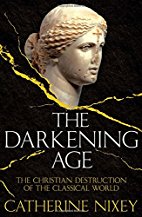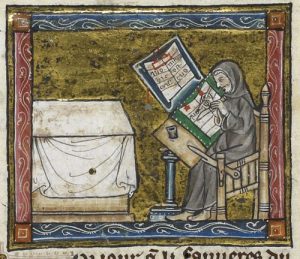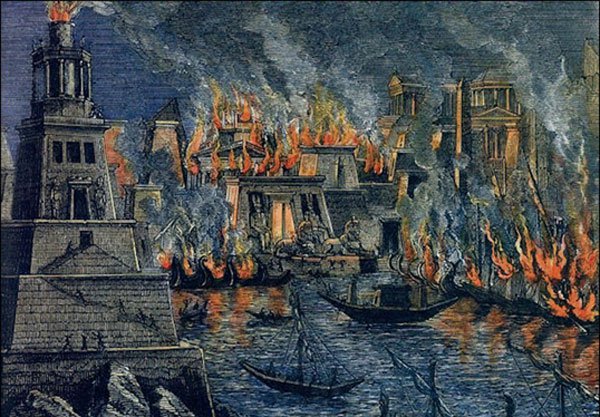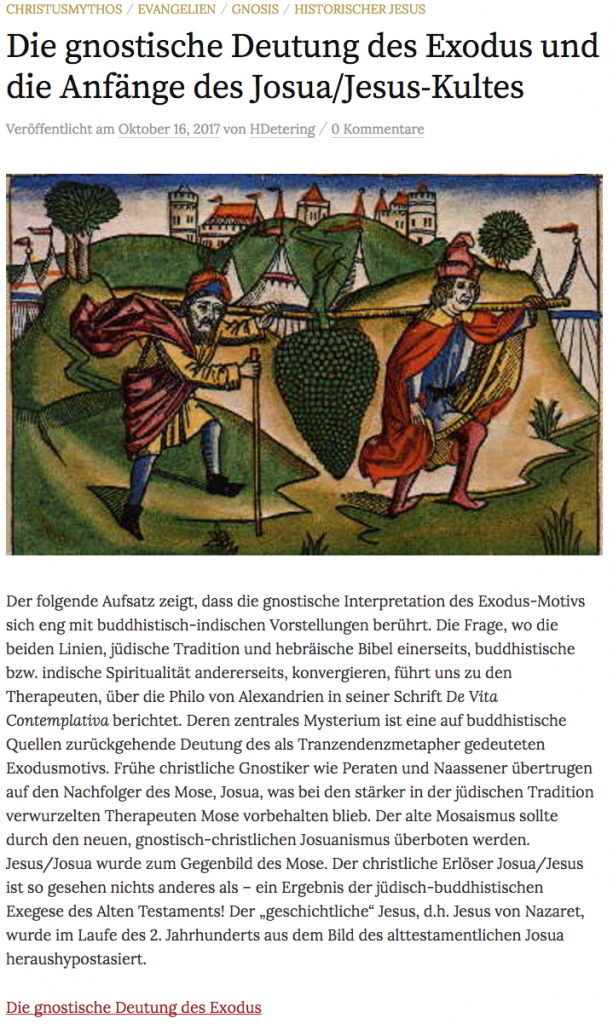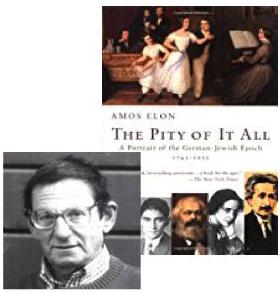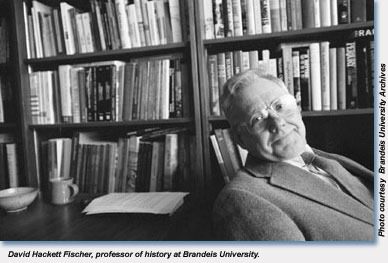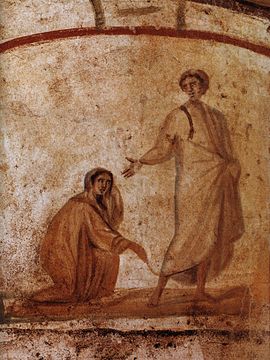
What do ancient historians think of the efforts of biblical scholars to inquire into “the historical Jesus” and the origins of Christianity?
M.I. Finley was an influential historian of ancient history who found time out from his studies on the classical (Greco-Roman) world and methodological problems in ancient history more generally to write a handful of articles on problems facing biblical scholars attempting to reconstruct Christian origins. Finley compiled three of these articles into a single chapter, “Christian Beginnings: Three Views of Historiography” in his small volume, Aspects of Antiquity: Discoveries and Controversies (1968).
Interestingly (to me, certainly) Finley zeroes in on the same methodological problems faced by scholars of Jesus and Christian origins that I have often addressed on this blog and in other online forums. It is nice to find agreement in a scholar so highly regarded as Finley was.
Vridar and related discussions of Maurice Goguel:
-
- Goguel’s critique of the Christ Myth (2010-10-21)
- Weaknesses of traditional anti-mythicist arguments (2010-07-11)
- Earl Doherty’s review
In the second part of his chapter and in the course of discussing Maurice Goguel’s methods in arriving at some detail about the historical Jesus, Finley comes across an all too common point in the work of another well-known name, A.N. Sherwin-White:
An Oxford historian, Mr A. N. Sherwin-White, has recently insisted that the life of Christ as told in the Gospels and the life of Tiberius as related by Tacitus or the account of the Persian Wars in Herodotus are all of a kind, subject to the same tests and having the same general aims. ‘Not‘, he adds, ‘that one imagines that the authors of the Gospels set to work precisely like either Herodotus or Thucydides.’ (Aspects, p. 177)
One is reminded of works by Richard Burridge and Richard Bauckham attempting to show how similar the gospels are to ancient biographies and histories. But Finley knows better than to allow Sherwin-White’s statement a free pass (my own bolding in all quotations):
Not precisely? Not at all. He has forgotten that the Greek verb at the root of ‘history’ is historein, to inquire, which is what Herodotus set out to do, and what the authors of the Gospels (or the apologetic writers and theologians) did not set out to do. The latter bore witness, an activity of an altogether different order. (Aspects, p. 177)
So we see that Finley called out the rhetorical sleights of hand we find are in fact all too common in the works of too many biblical scholars.
Finley then turned to another historian’s work exploring the nature of history:
In R. G. Collingwood’s justly famous dictum,
theocratic history … means not history proper … but a statement of known facts for the information of persons to whom they are not known, but who, as worshippers of the god in question, ought to know the deeds whereby he has made himself manifest
The real difficulty begins if one agrees with Collingwood. Once the existence of a process of myth-making is accepted, the question is, How does one make a history out of such historiographically unpromising materials? There are no others. A handful of sentences in pagan writers, wholly unilluminating, and a few passages in Josephus and the Talmud, tendentious when they are not forgeries, are all we have from non-Christian sources for the first century or century and a half of Christianity. It is no exaggeration to say that they contribute nothing. One must work one’s way as best one can with the Christian writings, with no external controls. (Aspects, p. 177)
“With no external controls”? That is the very phrase I have been using in my own criticisms of the methodology at the heart of historical reconstructions based on the gospels. To verify that claim type the words external controls and/or independent controls in the Search Vridar box in the right-hand column of this blog page.
Finley expands on this problematic point in other essays collated in The Use and Abuse of History (1975) and Ancient History: Evidence and Models (1999) but before I address any of that elaboration let’s keep with his focus on Goguel as an example. Goguel worked before terms like “criteria of authenticity” became commonplace but he understood and worked with the same principles or methods. He might call them “logical and psychological” tests (= criteria of coherence, plausibility…) applied to gospel passages to “uncover” probable “facts” about the historical Jesus.
One simple example will suffice. When asked by the Pharisees for ‘a sign from Heaven’, Jesus replied, ‘There shall be no sign given unto this generation’ (Mark viii, 11-12). Goguel comments:
This saying is certainly authentic, for it could not have been created by primitive Christianity which attached a great importance to the miracles of Jesus … This leads us to think that Jesus did not want to work marvels, that is to say, acts of pure display.
It follows that stories like those of Jesus walking on water are ‘extremely doubtful’. His healing, on the other hand, may be accepted, and, in conformity with the beliefs prevailing at the time, ‘it is true that these healings were regarded as miracles both by Jesus himself and by those who were the recipients of his bounty.’
This application of the ‘psychological method’ is neat, plausible, commonsensical. But is the answer right? Not only in this one example but in the thousands upon thousands of details in the story upon which Goguel or any other historian must make up his mind? I do not know what decisive tests of verifiability could possibly be applied. The myth-making process has a kind of logic of its own, but it is not the logic of Aristotle or of Bertrand Russell. Therefore it does not follow that it always avoids inconsistency: it is capable of retaining, and even inventing, sayings and events which, in what we call strict logic, undermine its most cherished beliefs. The difficulties are of course most acute at the beginning, with the life of Jesus. One influential modern school, which goes under the name of ‘form-criticism’, has even abandoned history at this stage completely. ‘In my opinion,’ wrote Rudolph Bultmann, ‘we can sum up what can be known of the life and personality of Jesus as simply nothing.’ (Aspects, p. 178)
It does not appear that Finley was prepared to go along with the methods, let alone conclusions, of biblical scholars in their efforts to establish what was historical about Jesus. A gospel narrative is merely a gospel narrative. We have no way of testing whether any of its narrative was genuinely historical or based on historical memory.
Sometimes one hears how accurate are the details of geography or social customs in the gospels as if such details add any weight to the historicity of the narrative. Finley responded to that rejoinder in the third part of his chapter in Aspects of Antiquity. He begins with a reminder of the point just made above:
[T]he Gospel accounts . . . are the sole source of information about the Passion – that cannot be said often enough or sharply enough – and all four agree on the responsibility of some Jews. . . .
What, then, actually happened? Not even the Synoptic Gospels provide a clear and coherent account, and there are added confusions and impossibilities in the Fourth Gospel. There is one school of thought, to which I belong, which holds that no reconstruction is possible from such unsatisfactory evidence. (Aspects, p. 182)
Finley then returned to Sherwin-White’s misleading comparison of the gospels with Greek histories:
Even if one could accept the view recently re-stated with much vigour by A. N. Sherwin-White in Roman Society and Roman Law in the New Testament, that the Acts and Gospels are qualitatively no different as historical sources from Herodotus or Tacitus, one does not get very far. Mr Sherwin-White has been able to demonstrate that the New Testament is very accurate in its details about life at the time, whether about geography and travel or the rules of citizenship and court procedures. Why should it not be? It is made up of contemporary documents, regardless of the accuracy of the narrative, and so reflects society as it was. That still does not tell us anything about the narrative details, and they are what matters. For that Mr Sherwin-White must, in the end, select and reject, explain and explain away, just as every other scholar has done for as long as anyone has felt the urge (and the possibility) of a historical reconstruction of the Passion. (Aspects, pp. 182f)
And that’s exactly what we read so often even among biblical scholars — that background details somehow lend historical credibility to the gospel narrative.
He is probably right, but it still does not follow, as he seems to think, that the veracity of the Gospel narrative has thereby been substantiated, or even been made more probable in a significant sense.
Far be it from me to suggest, no matter how faintly, that it is ever unimportant to get the historical record right. But the feeling will not go away that there is an Alice-in-Wonderland quality about it all. (Aspects, p. 183)


